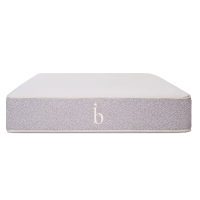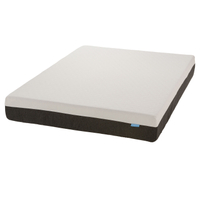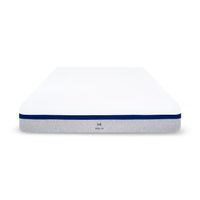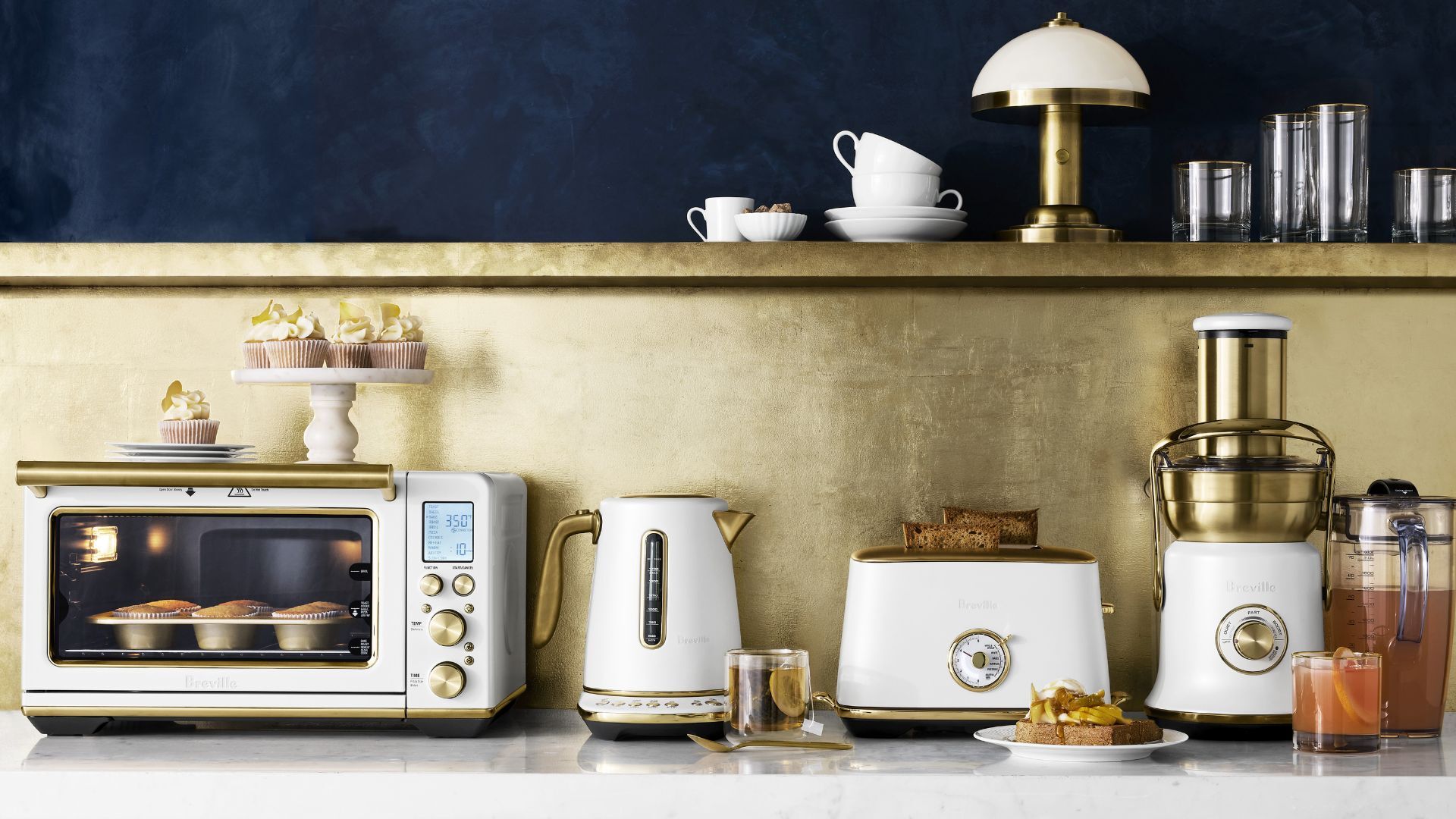If fiberglass is dangerous, why is it used in some mattresses? We asked two experts
Is fiberglass in mattresses that big of a deal? Here's what two bed experts told us
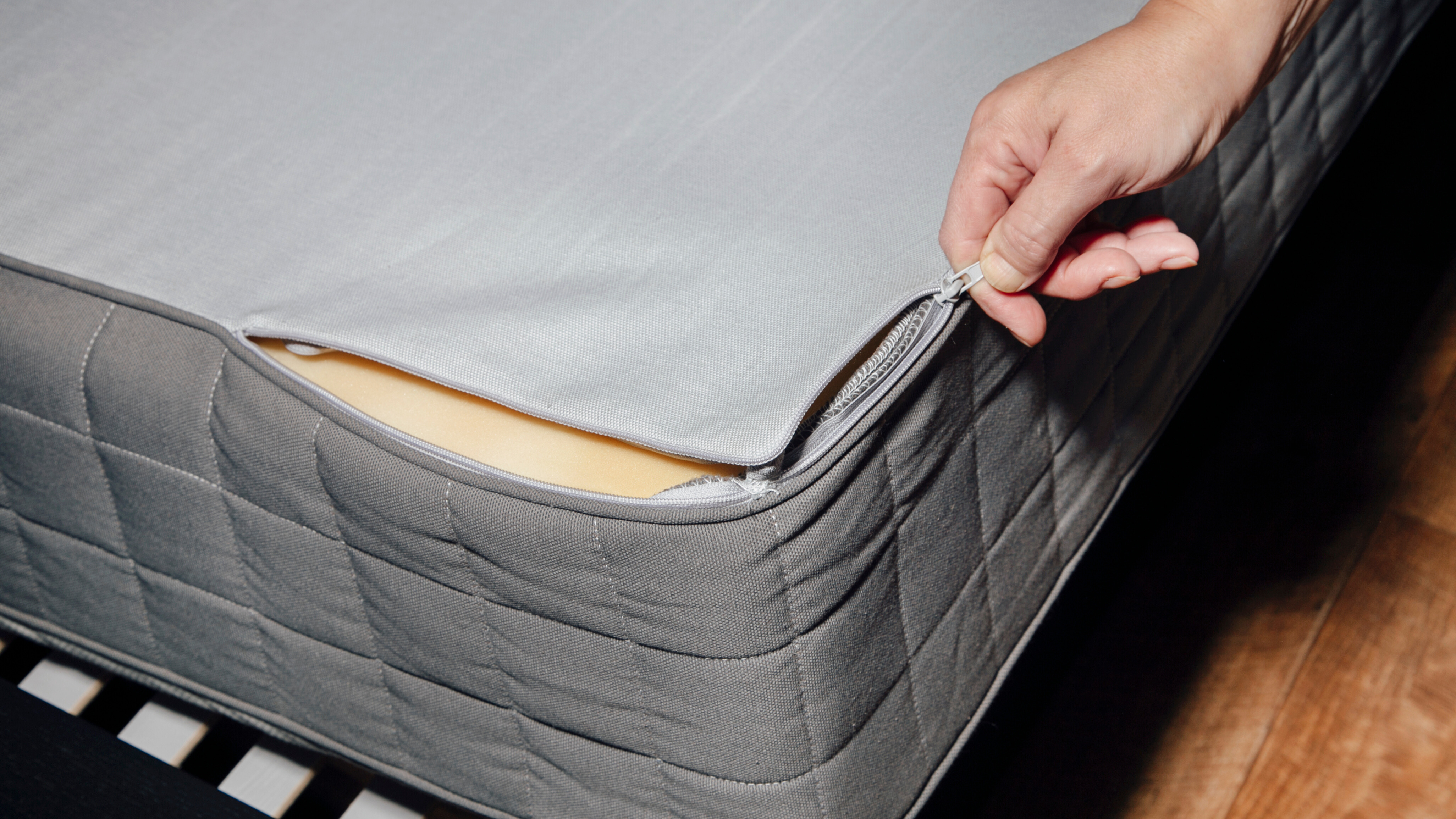
Fiberglass has become a huge talking point in the mattress industry in recent years, with shoppers wanting to know whether the material is safe for sleeping on or not. There's a lot of misinformation flying around about the use of fiberglass in mattresses, but if it is dangerous, then why is it still being used as a flame retardant in some beds?
To find out, we recently spoke to Jonathan Warren, Director of Time4Sleep, and Adam Tishman, co-founder of Helix Sleep. Here they talk to us about why fiberglass is used in mattresses, how to tell if your mattress contains fiberglass, and what to do if it does.
Thankfully, most of this year's best mattresses for all sleepers are free from fiberglass, but some beds, especially cheaper models, still use it. Here's what you need to know...
What is fiberglass in mattresses?
Fiberglass is a type of synthetic material that is commonly used in wall insulation. This clear, straw-like material (which resembles translucent cotton candy or candy floss) is often invisible to the naked eye and can be woven into mattress covers, all-foam beds, and mattress toppers.
Fiberglass is a type of fire retardant. Mattresses can be extremely flammable without a proper flame barrier, so fiberglass is often used in mattresses to act as a fire retardant. "Fiberglass can serve as an insulating layer beneath the cover of a mattress, reducing the flammability of internal mattress materials," says Helix co-founder Alan Tishman.
Are fiberglass mattresses safe?
While the main reason for fiberglass use in mattresses is safety. The irony is that the material has become notorious for its risks. But how potentially dangerous are these risks? Time 4 Sleep's Jonathan Warren says that as long as the cover remains intact and keeps the fiberglass inside the bed, then there shouldn't be a huge risk to the sleeper. "The fibreglass itself is not inherently harmful," he says. "But it can become a concern when the fibres are released into the air and come into contact with skin, eyes, or respiratory systems."
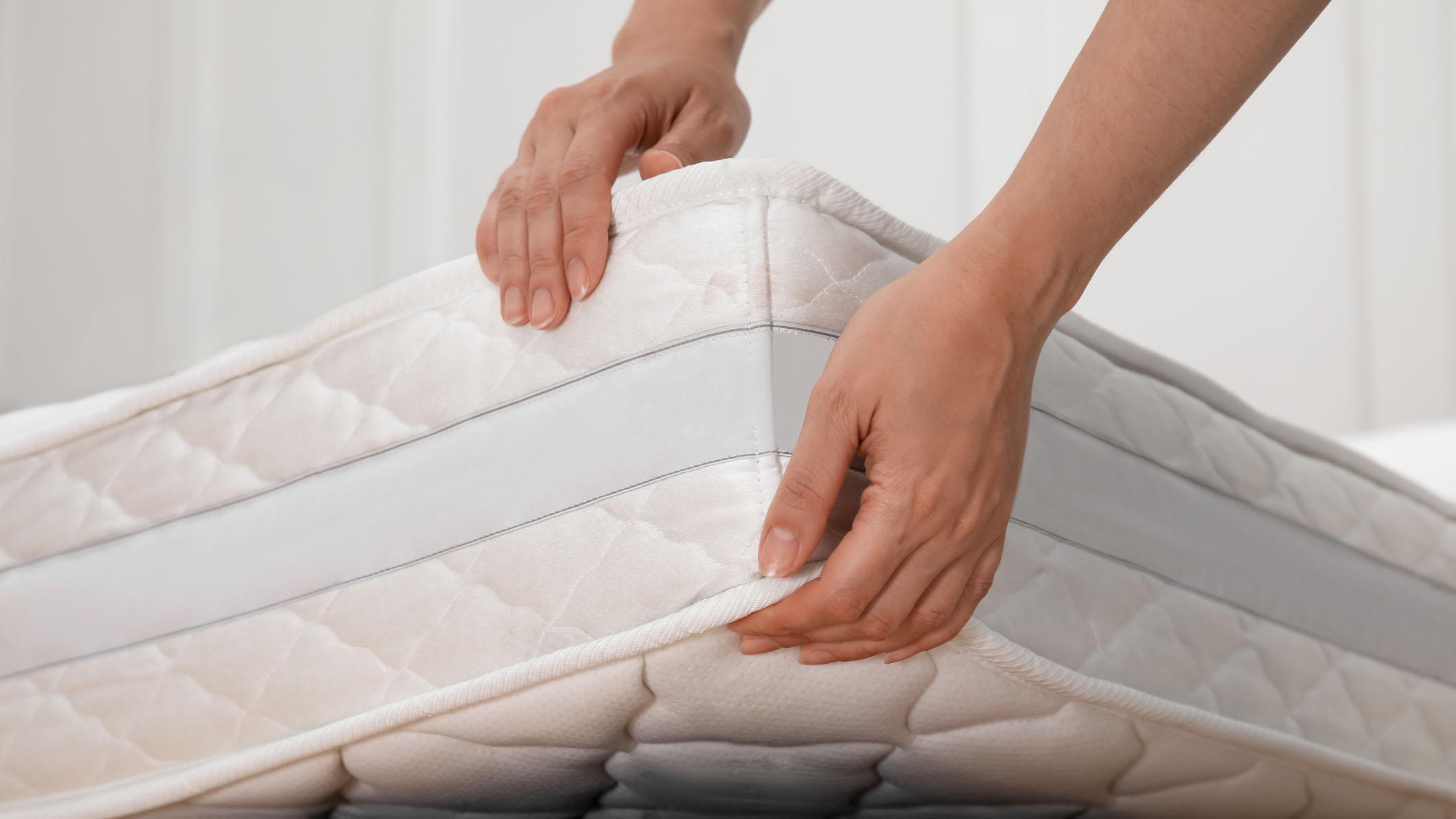
Along with the health risks of fiberglass exposure, such as the link between fiberglass inhalation and lung disease, fiberglass can also spread throughout your home if it escapes from the mattress. If this happens, clean up is very difficult and expensive, often requiring the help of professional cleaners.
Sign up to get the BEST of Tom's Guide direct to your inbox.
Get instant access to breaking news, the hottest reviews, great deals and helpful tips.
"The danger with fiberglass use in mattresses comes from the risk of a tear or rip exposing vast amounts of fiberglass to your home," says Adam Tishman of Helix Sleep. "Fiberglass is often used in a woven layer directly beneath the cover of a mattress. If the cover is torn, ripped, or removed, millions of fiberglass particles can be spread quickly throughout your home."
Tishman continues that the clear, thin appearance of fiberglass can make matters worse. "Because it is often not visible to the human eye, fiberglass can spread without your immediate knowledge," he says. "It’s not until symptoms like itching, coughing, or skin irritation appear that users are aware of the potential fiberglass exposure in their home."
Why do mattresses have fiberglass?
So, if fiberglass poses so many risks to both health and home, why is it used in mattresses? Well, according to Tishman, there are two main reasons: fire safety and money. "All mattresses in the US must meet two federal fire safety standards: the Standard for the Flammability (Smoldering) of Mattresses and Mattress Pads and the Open Flame Standard for Mattress Sets," he explains. "Fiberglass is a common component in the mattress industry because it’s a cheap way to meet these fire safety standards."
Warren says that there safer types of fire retardants that come without the health and safety risks, but some mattress manufacturers avoid these for monetary gain. “Some mattress manufacturers use fibreglass to cut down on production costs as other chemical additives and coatings commonly used to make memory foam mattresses fire retardant can quickly drive up prices," he points out. "However, this doesn’t prioritise the health and safety of customers."
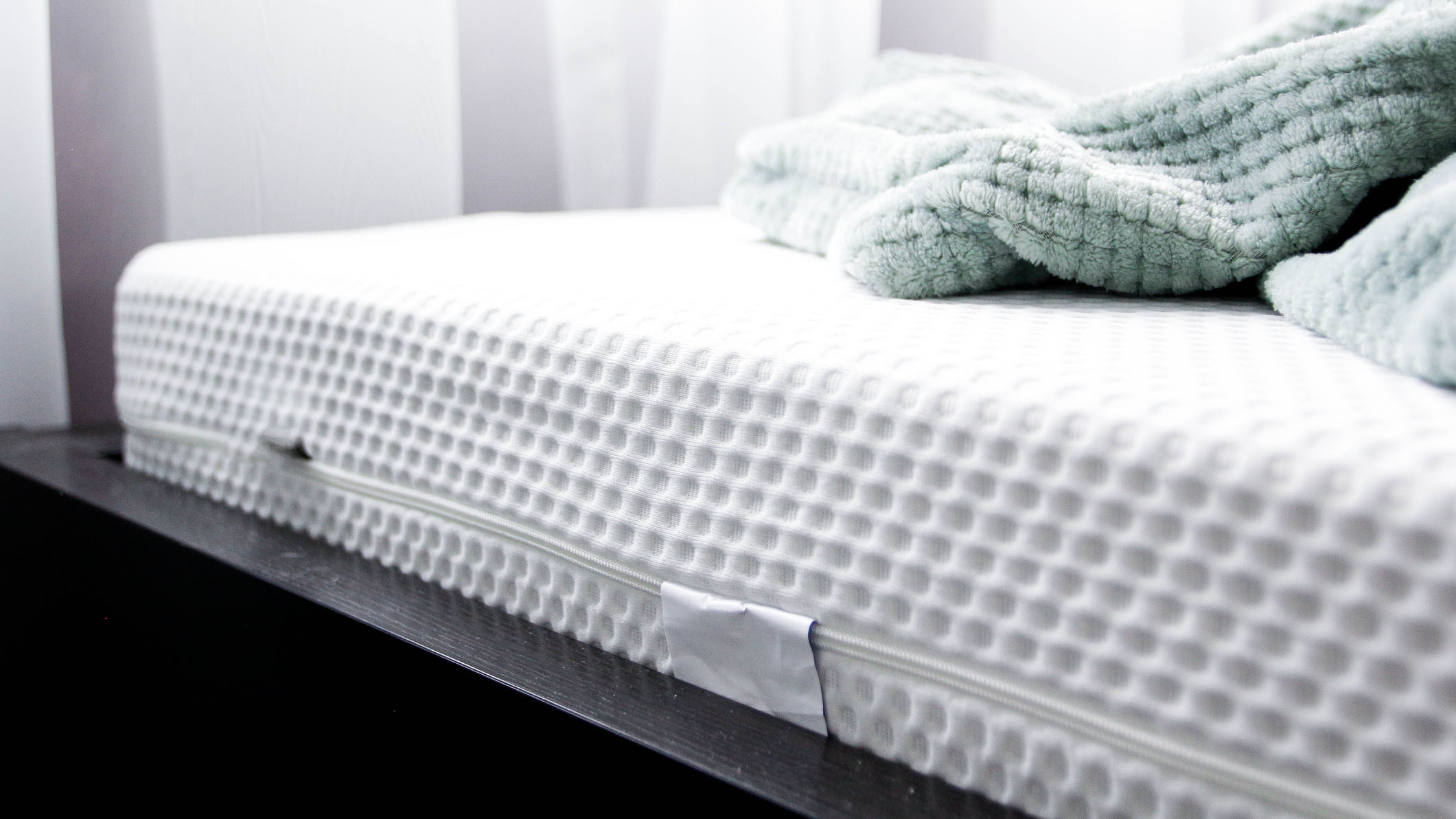
Mattress production regulations are also less strict in the US, meaning that it is still legally sound to use fiberglass in mattresses. "UK production regulations are tougher than in other countries, but it’s still important to shop with reliable retailers and trustworthy brands who meet these safety regulations," says the mattress specialist.
"Most UK mattress suppliers use chemical additives that are added to the foam during production. These additives make the foam fire retardant and negate the need to have an extra protective inner case (or fibreglass), making them a popular choice. “On non-foam mattresses, the ticking - aka the mattress covering - is usually treated with a flame-retardant coating or back coating to improve its fire resistance and this is a much safer option than fibreglass. "
Do all mattresses have fiberglass?
No, many US mattress brands are now ditching fiberglass in favour of safer flame barriers, such as chemical-free Rayon fiber, thistle, and organic wool. Brands that create fiberglass-free mattresses include Saatva, Helix Sleep, Amerisleep, and Bear Mattress.
Fiberglass is also virtually non-existent in the best organic mattresses, with eco-luxury sleep brands such as Birch Living, Awara, and Avocado using natural, non-toxic flame barriers such as organic wool and cotton.
You may still find fiberglass in some cheap mattresses to keep both production costs and the mattresses' price tags low.
How to tell if a mattress has fiberglass
While you should never open up the cover of a mattress to check for fiberglass, according to Tishman, there are a few tricks to help you figure out whether your mattress does contain the material.
"The best way to know whether your mattress contains fiberglass is to check the label," he suggests. "Materials listed as “glass fiber,” and “glass wool,” can indicate that fiberglass has been used to some degree in the making of your mattress. It can also be helpful to contact the manufacturer of your mattress directly to inquire about all of the materials used."
And if your mattress does indeed contain fiberglass? "Avoid removing the external cover of the mattress, he warns. "You can also add a mattress protector or full mattress encasement to reduce the risk of fiberglass exposure."
Warren suggests investing in a cover that is specifically designed to guard against fiberglass exposure (look for a bed-bug resistant and waterproof mattress protectors) and to be cautious when transporting the mattress. "If you need to move a mattress that contains fibreglass, use personal protective equipment, like gloves and a mask,” he advises.
The best fiberglass-free mattresses on sale now
Birch Natural: from $1,498.80 $1,124.10 at Birch Living
The Birch Natural uses organic materials such as wool layers as flame barriers, and a our Birch Natural mattress review praised the support it offers back and stomach sleepers. Right now, their 25% off Presidents' Day sale is still on, so the evergreen 20% off deal has been ramped up to 25% off.
Bear Original Mattress: from $786 $511 at Bear Mattress
All Bear mattresses are 100% fiberglass-free and use eco-friendly rayon as a flame barrier instead. Our Bear Original mattress review praised its excellent motion isolation for couples and the soft, contouring comfort it offers to all sleep positions. There's always a 35% off deal on this mattress, so you'll never have to pay full retail price.
Helix Midnight: from $702.20 $936.30 at Helix Sleep
Our Helix Midnight mattress review rated this the best mattress for side sleepers, and the good news is that it uses chemical-free Rayon fiber as a flame retardant. Right now, the Presidents' Day Helix mattress sale is still going, knocking 25% off instead of the usual 20% off deal. You'll also get a free bedding bundle to boost your value for money.

Frances Daniels is a PPA-accredited journalist and Sleep Staff Writer at Tom's Guide with an MA in Magazine Journalism from Cardiff University. Her role includes covering mattress and sleep news and writing sleep product reviews and buyer's guides, including our Best Hybrid Mattress 2025 guide. She is hugely interested in the relationship between good sleep and overall health, interviewing a wide array of mattress and sleep experts to create well-informed articles about important topics such as nutrition, sleep disorders (from sleep apnea to night terrors), lucid dreaming, sleep hygiene, and mattress care. She is also our specialist on mattress toppers — producing mattress topper reviews and taking care of our Best Mattress Toppers 2025 guide — and takes the lead on all content related to fiberglass-free mattresses for a clean, non-toxic sleep. Outside of Tom's Guide, she has written for Ideal Home, Homes & Gardens, and Marie Claire.
